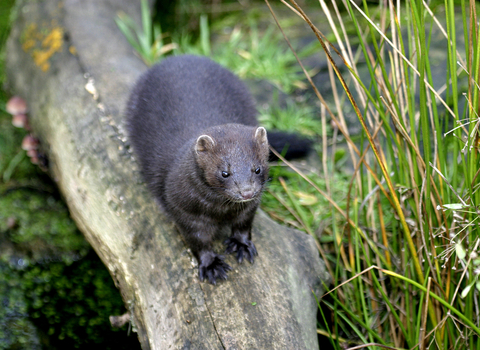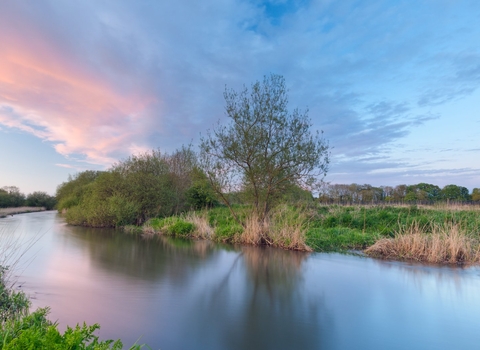
©Wildstock
American mink
Escaped or intentionally freed from fur farms in the 1960s, the American mink is now well established in the UK. Its carnivorous nature is a threat to our native water vole and seabird populations.
Scientific name
Neovison visonWhen to see
January to DecemberSpecies information
Category
Statistics
Length (excluding tail): around 30-43 cmTail: around 18 cm
Weight: around 0.5-1.5 kg
Average lifespan: 10-12 years
(Mink are extremely variable in size, with averages varying across different regions. Males are larger and heavier than females.)
Invasive, non-native species.
About
The American mink (or just 'mink') escaped from fur farms in the 1950s and 1960s, and now breeds across most of the country. It is an active predator, feeding on anything it is big enough to catch, including ground-nesting seabirds and our native water voles, which are now under threat of extinction. Mink are good swimmers and females are small enough to enter the water-line burrows of water voles and take their young.Mink are fiercely territorial; their dens are close to the water and the females have one litter of four to six kittens a year. Mink are much more likely to be seen than the shy and secretive otter.
How to identify
The mink is a small, lithe mammal, with brown-black fur, a narrow snout, a small, white chin and a white throat. Mink can be distinguished from otters by their smaller size, darker fur, and smaller face.Distribution
Widespread, found throughout the country except the far north of Scotland and some islands.In our area
Many native species have suffered as a result of mink introduction in Shropshire. The water vole in particular has dramatically reduced in number and is now contained to just a few locations.
Did you know?
American mink droppings or 'spraints' are deposited in similar sites to those of otters - by prominent fallen trees, weirs and bridges - as 'scent messages' to passers-by. However, mink spraints have a particularly pungent, foul, fishy odour and are very distinct from otter droppings, which smell like jasmine tea.Many native species have suffered as a result of mink introduction in Shropshire. The water vole in particular has dramatically reduced in number and is now contained to just a few locations.

